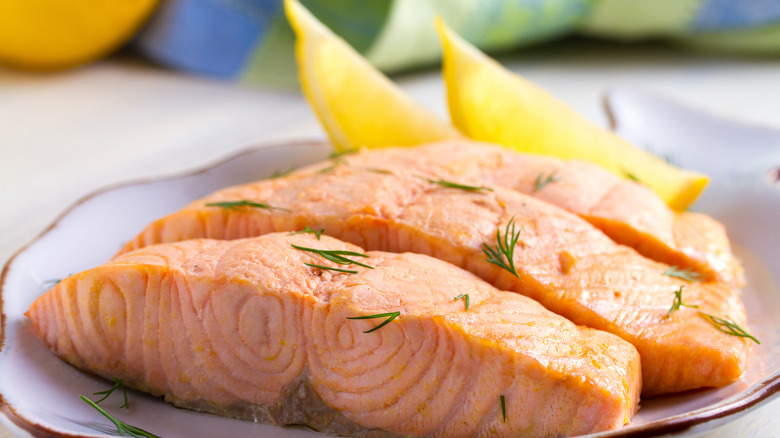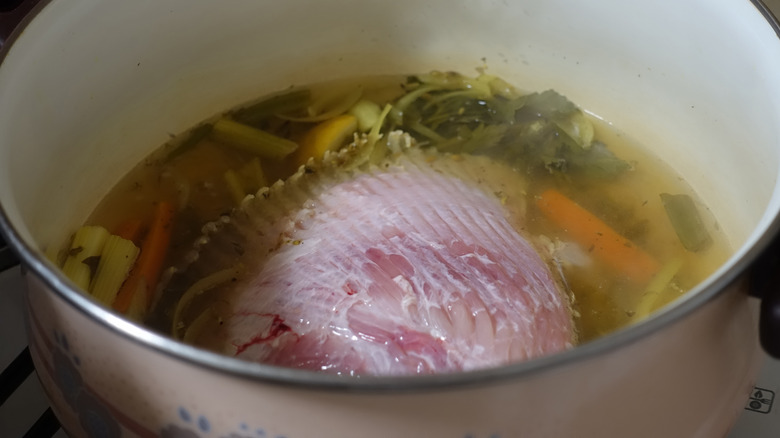The Best Way To Prep Fish For Deep-Poaching So It Doesn't Fall Apart
Poaching in terms of cooking immediately brings to mind the images of the beloved American breakfast eggs benedict, delectable poached salmon, or sweet dishes like sous-vide poached pears. This method of cooking excites health-conscious people because of the way it shuns fat (via Escoffier School of Culinary Arts), but some people are intimidated by the cooking method because many mistakes can be made along the way.
For instance, one of the biggest mistakes you could make while poaching eggs is to add them to the water too aggressively. A delicate hand is also required when poaching fish. Plonking it into boiling water instead of letting it gently slip into the pan will ruin your dish (via The Better Fish). It's easy enough to poach fish in a shallow pan partially filled with your favorite sauce, but what about deep (or submersion) poaching? The method is the intense version of regular poaching as it involves completely immersing larger ingredients like hunks of meat or poultry.
Just like regular poaching, there are an array of liquids you can use for deep-poaching — wine, broth, milk, water, oil, or a court bouillon (a short stock with wine, water, mirepoix, salt, and herbs). It seems like a really great way to infuse flavor — but it does sound like the fish will disintegrate or become soggy when soaked fully in these preparations, right? Worry not, we have a tip for you so that the meat retains its texture.
Wrap your fish to prevent it from disintegrating
The secret lies in wrapping the fish (even a whole one) in a cheesecloth, according to Culinary Pro. This will maintain the meat's structure, thus preventing it from disintegrating. Fish like salmon and halibut, and shellfish are ideal for deep-poaching. Cuts with more than one-inch thickness will yield better results when fully submerged as well.
It's best to be slightly delicate while dousing the fish, says Epicurious. Think of this technique as similar to braising — the fish has to be lightly simmered in the liquid of your choice. The only difference is that the fish will be completely covered. Also, the bigger the cuts, the longer the cooking time. So plan for four to five minutes per inch of the meat.
This method will be applicable for oil-poached fish as well (via Sitka Salmon). The fish takes up to 15 minutes to turn opaque with this method — however, it absorbs the flavor of the oil. You can reuse the oil as well. Milk-poached fish cooks for five minutes. Be sure to submerge the whole fish inside, and don't bring the milk to boil or it will curdle.
Whatever poaching liquid you use, remember to wrap your fish in cheesecloth for the best result.

